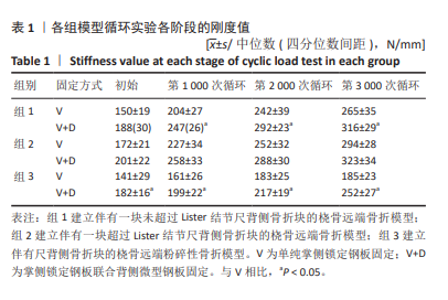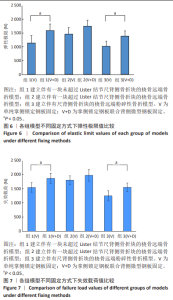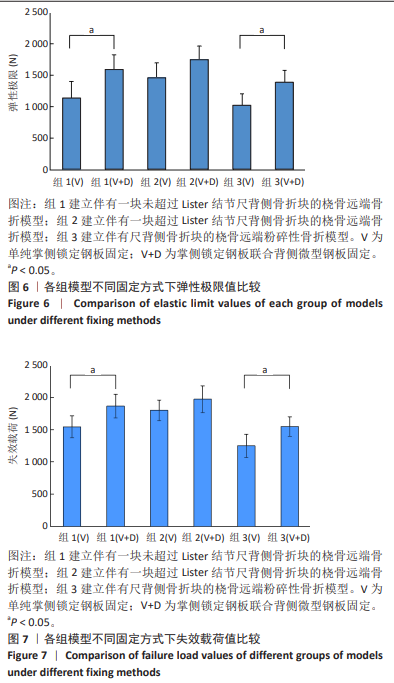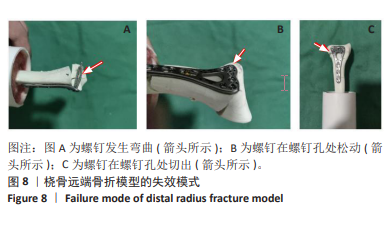[1] LUBBE RJ, KOKMEYER DT, YOUNG CP. Distal Radius Fractures: Recognizing and Treating Complex Fracture Patterns. J Orthop Trauma. 2021;35(Suppl 3):s33-s36.
[2] MIYASHIMA Y, KANESHIRO Y, YANO K, et al. Size and stabilization of the dorsoulnar fragment in AO C3-type distal radius fractures. Injury. 2019;50(11):2004-2008.
[3] LANS J, ALVAREZ J, KACHOOEI AR, et al. Dorsal lunate facet fracture reduction using a bone reduction forceps. J Wrist Surg. 2019;8(2):118-123.
[4] ALTER TH, VARGHESE BB, DELPRETE CR, et al. Reduction Techniques in Volar Locking Plate Fixation of Distal Radius Fractures. Tech Hand Up Extrem Surg. 2022;26(3):168-177.
[5] OBATA H, BABA T, FUTAMURA K, et al. Diffi-culty in fixation of the volar lunate facet fragment in distal radius fracture. Case Rep Orthop. 2017;2017:6269081.
[6] MACCAGNANO G, NOIA G, VICENTI G, et al. Volar locking plate versus external fixation in distal radius fractures: A meta-analysis. Orthop Rev (Pavia). 2021;13(1):9147.
[7] LEE JI, CHO JH, LEE SJ. The effects of the frag-Loc((R)) compression screw on distal radius fracture with a displaced dorsoulnar fragment. Arch Orthop Trauma Surg. 2015;135(9):1315-1321.
[8] SLUTSKY DJ, OSTERMAN AL. Fractures and injuries of the distal radius and carpus: the cutting edge. Elsevier Health Sci. 2009:125-133.
[9] JOHNSON NA, CUTLER L, DIAS JJ, et al. Complications after volar locking plate fixation of distal radius fractures. Injury. 2014;45(3): 528-533.
[10] SAKAMOTO S, DOI K, HATTORI Y, et al. Comminuted Dorsal Ulnar Fragment in Distal Radius Fractures Treated Using the Integrated Compression Screw With a Mini-Plate. J Hand Surg Am. 2022;47(4): 394.e1-394.e6.
[11] KILIAN M, SIMKOVIC P, ZAMBORSKY R, et al. What are the ideal screw lengths in volar locking plate fixation for distal radius fractures? Bratisl Lek Listy. 2019;120(7):505-509.
[12] ABE S, SHIMADA T, MURASE T, et al. Comparison of the Orientation Angles of Volar Locking Plate Distal Ulnar Locking Screw for Distal Radius Fractures. J Hand Surg Am. 2022;47(4): 389.e1-389.e13.
[13] KAEMPF DE OLIVEIRA R, BRUNELLI JPF, AITA MA, et al. The Flexor Carpi Radialis Portal for Arthroscopy-Assisted Reduction of the Dorsal Ulnar Fragment in Distal Radius Fractures. J Wrist Surg. 2021;12(1):63-66.
[14] SIROROS N, MERFORT R, LIU Y, et al. In Vitro Investigation of the Fixation Performance of a Bioabsorbable Magnesium ACL Interference Screw Compared to a Conventional Interference Screw. Life (Basel). 2023;13(2):484.
[15] 夏长江,袁志峰,方宁.基于尺桡骨三维有限元模型分析桡骨远端骨折的生物力学特征[J].中国组织工程研究,2020,24(6):893-897.
[16] DOULEH DG, BALDINI T, CARRY P, et al. Ligament-Sparing Volar Radiocarpal Arthrotomy During Distal Radius Fracture Repair: Biomechanical Implications on Wrist Stability in a Cadaveric Model. J Hand Surg Am. 2022:S0363-5023(22)00511-1.
[17] LIU HC, ZENG YH, LIN CL. Mechanical Comparison of a Novel Hybrid and Commercial Dorsal Double Plating for Distal Radius Fracture: In Vitro Fatigue Four-Point Bending and Biomechanical Testing. Materials (Basel). 2021;14(20):6189.
[18] TAYLOR KF, SHARMA J, DAVISSON NA, et al. Effect of Metacarpal Fixation Configuration on Strength and Fracture Gap Displacements in a Cadaveric Model of Externally Fixed Distal Radius Fractures. Hand (N Y). 2021;16(2):241-247.
[19] YEAGER K, HEIFNER J, RUBIO F, et al. Flexor Carpi Radialis Tendon Insertion Onto the Trapezial Ridge: An Anatomic Description. J Hand Surg Glob Online. 2022;5(1):55-57.
[20] ZHONG J, LI X, LV F, et al. Clinical applications of internal fixation via the volar approach with pronator quadratus preservation for distal radius fractures. Turk J Med Sci. 2022;52(4):1177-1182.
[21] NYPAVER C, BOZENTKA DJ. Distal Radius Fracture and the Distal Radioulnar Joint. Hand Clin. 2021;37(2):293-307.
[22] DANIEL R, JOERG G, KURT K, et al. The effect of local bone mineral density on the rate of mechanical failure after surgical treatment of distal radius fractures: a prospective multicentre cohort study including 249 patients. Arch Orthop Trauma Surg. 2015;135(2):201-207.
[23] OSADA D, VIEGAS SF, SHAH MA, et al. Patterson RM. Comparison of different distal radius dorsal and volar fracture fixation plates: a biomechanical study. J Hand Surg Am.2003;28:94-104.
[24] PUTNAM MD, MEYER NJ, NELSON EW, et al. Distal radial metaphyseal forces in an extrinsic grip model: implications for post fracture rehabilitation. J Hand Surg Am. 2000;25:469-475.
[25] MATHIOWETZ V, KASHMAN N, VOLLAND G, et al. Grip and pinch strength: normative data for adults. Arch Phys Med Rehabil. 1985; 66:69-74.
[26] CHIU J, ROBINOVITCH SN. Prediction of upper extremity impact forces during falls on the outstretched hand. J Biomech. 1998;31(12): 1169-1176.
[27] KIM KJ, ASHTON-MILLER JA. Biomechanics of fall arrest using the upper extremity: age differences. Clin Biomech (Bristol, Avon). 2003; 18(4):311-318.
[28] OSADA D, VIEGAS SF, SHAH MA, et al. Patterson RM. Comparison of different distal radius dorsal and volar fracture fixation plates: a biomechanical study. J Hand Surg Am. 2003;28:94-104.
[29] LONDON DA, GLUCK MJ, KIRSCHENBAUM JD, et al. Casting Position for Distal Radius Fractures Changes Radiocarpal Joint Forces: A Cadaveric Study. J Hand Surg Am. 2022;47(5):482.e1-482.e10.
[30] 杨科,张寨男,池小楼,等.循环载荷下含水砂岩裂纹演化与损伤特征试验研究[J].岩土力学,2022,43(7):1791-1802.
[31] GARTLAND JJ JR, WERLEY CW. Evaluation of healed Colles’ fractures. J Bone Joint Surg Am 1951;33A(4):895-907.
[32] LIDSTROM A. Fractures of the distal end of the radius. A clinical and statistical study of end results. Acta Orthop Scand Suppl. 1959;41: 1-118.
[33] FRYKMAN G. Fracture of the distal radius including sequelae–shoulder-hand-finger syndrome, disturbance in the distal radio-ulnar joint and impairment of nerve function. A clinical and experimental study.Acta Orthop Scand. 1967;108:1-155. |





